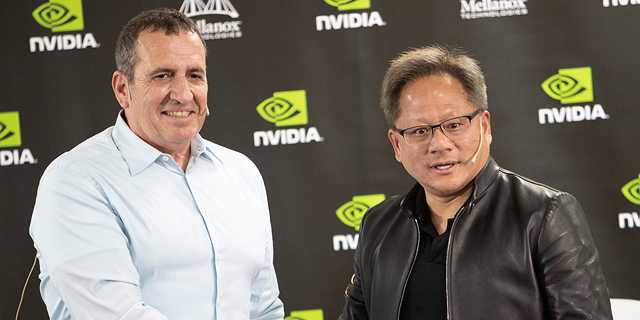
Nvidia’s Israeli network: The $7 billion bet that built a $30 billion business
Mellanox’s technology is now the backbone of AI factories worldwide.
When Nvidia announced quarterly results on Wednesday, much of Wall Street’s attention focused on whether the chipmaker could continue to justify its meteoric rise in market value. But beneath the headlines, one part of the business stood out as the quiet powerhouse driving the company’s transformation into a $4 trillion titan: networking.
The division, born out of Nvidia’s 2020 acquisition of Israeli chipmaker Mellanox Technologies for $6.9 billion, delivered the most dramatic jump among all of Nvidia’s significant units. Networking revenues surged 46 percent from the previous quarter and nearly doubled year over year, reaching $7.25 billion in the second quarter alone. That puts the division on an annual run rate of $25–30 billion, an extraordinary sum for what was once seen as a supporting role to Nvidia’s flagship graphics processors.
Nvidia revealed last week that a technological breakthrough by Nvidia Israel will allow data centers in geographically distant locations to operate as if they were in one place, effectively creating “AI factories” on a massive scale and significantly increasing the maximum computing power available to the industry.
Nvidia’s R&D center in Israel is primarily focused on developing communication solutions for Nvidia’s AI chips. Its two flagship communication products enable ultra-fast connections both between chips within a server and between servers inside the same data center. These capabilities are critical for maximizing the processing power of Nvidia’s AI hardware.
Now, the company is unveiling a new development that extends those capabilities beyond the walls of a single facility. The new technology makes it possible to connect physically distant data centers in much the same way, effectively creating one mega–supercomputer and pushing the boundaries of data center computing power.
According to Nvidia, today’s data centers are already approaching the limits of what a single facility can provide, constrained by physical limitations such as energy supply and chip density. The new platform, Spectrum-XGS, addresses obstacles like long latency, which has until now prevented separate facilities from operating as a unified system.
“The AI industrial revolution is here, and giant-scale AI factories are the essential infrastructure,” said Jensen Huang, founder and CEO of NVIDIA. “With NVIDIA Spectrum-XGS Ethernet, we add scale-across to scale-up and scale-out capabilities to link data centers across cities, nations and continents into vast, giga-scale AI super-factories.”
Nvidia Israel’s breakthrough relies on advanced algorithms that enable networks to dynamically adapt to the distance between facilities. “With advanced, auto-adjusted distance congestion control, precision latency management and end-to-end telemetry, Spectrum-XGS Ethernet nearly doubles the performance of the NVIDIA Collective Communications Library, accelerating multi-GPU and multi-node communication to deliver predictable performance across geographically distributed AI clusters. As a result, multiple data centers can operate as a single AI super-factory, fully optimized for long-distance connectivity,” the company said in a press release.
The development highlights the strategic importance of Nvidia’s Israeli R&D hub. Over the next three years, Nvidia’s roadmap includes four major product lines: AI processors, computer processors (CPUs), and two categories of communication chips. Of these, three are being developed under the leadership of the Yokneam-based team. It is likely that the new technology will also be integrated into this roadmap, further cementing the Israeli center’s central role.
Related articles:
This summer, Nvidia announced plans for a massive new campus in northern Israel, with an investment of billions of dollars and spanning 70 to 120 dunams. When completed within five to six years, it will be Israel’s largest high-tech campus and make Nvidia the country’s biggest private-sector employer.
“The synergy between the processor, the brain, and connectivity turned Nvidia from a $93 billion company into the $4 trillion giant it is today,” said Mellanox co-founder Eyal Waldman in a recent interview.
Mellanox, founded by Waldman after earlier stints at Galileo and Marvell, had long specialized in high-performance networking and interconnects. Its InfiniBand technology became essential for linking servers in supercomputers, research clusters, and eventually the vast data centers now used for artificial intelligence.
